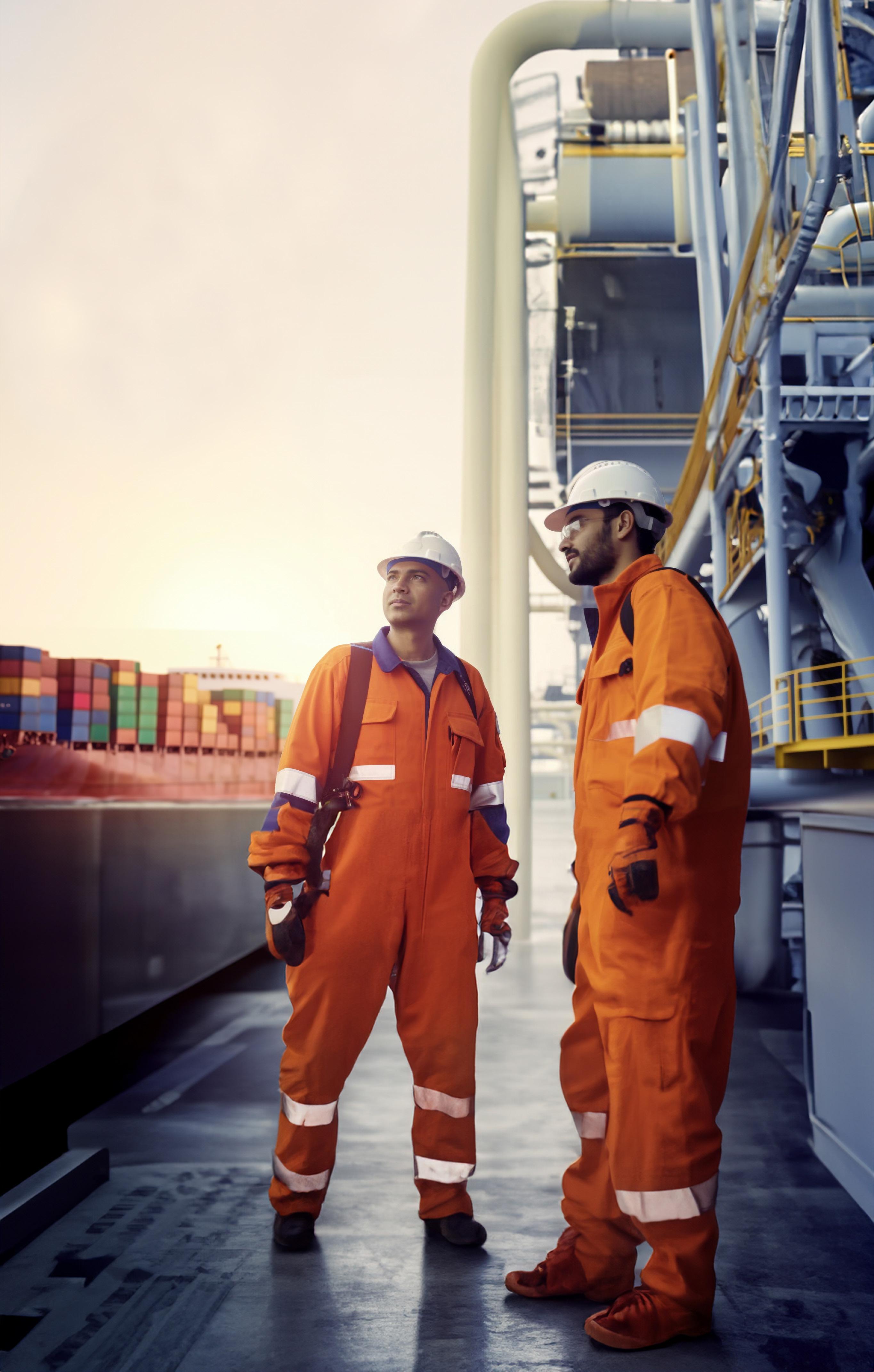








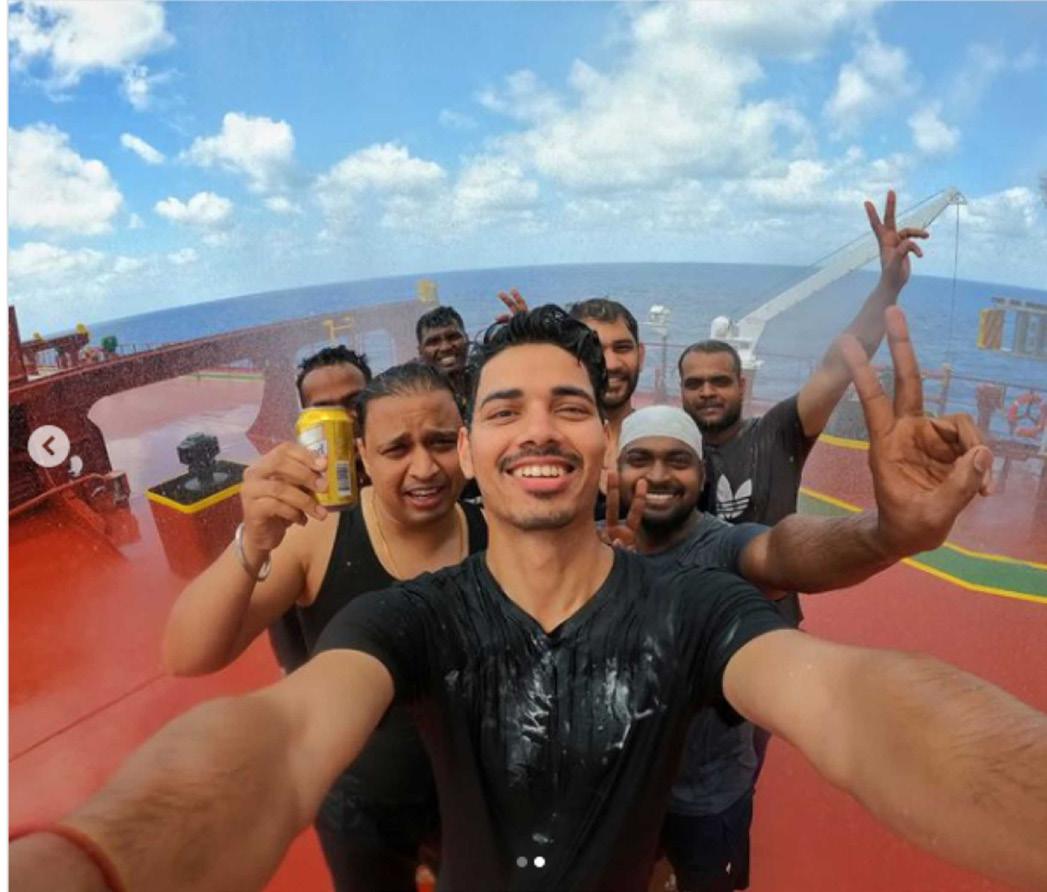
The Holi festival, a vibrant and joyous
celebration in India, may not have any direct connection to modern ships and shipping; however, the festival’s themes of unity, harmony, and the triumph of good over evil are metaphorically linked to the maritime industry.
Historically, Holi has been linked to maritime trade and commerce. In India, Holi marks the end of the winter season and the beginning of spring. This transition was significant for maritime activities as it signalled the beginning of favorable weather conditions for sailing. Ships laden with goods would set sail after Holi to embark on trading voyages along coastal routes and beyond.
Holi is celebrated with exuberance in coastal regions where maritime activities are prominent. The festival brings communities together, fostering cultural exchange and camaraderie among sailors, traders, and coastal residents. Ships docking in ports during Holi would often witness vibrant
celebrations, reflecting the rich maritime culture of the region.
On ships, where crew members come from diverse backgrounds and cultures, festivals like Holi can promote unity and camaraderie among the crew. Celebrating Holi onboard a ship can help foster a sense of community and belonging among sailors, regardless of their nationality or beliefs. It can serve as a way to break barriers and strengthen bonds among the crew.
Holi’s association with colors can also be symbolic in the context of ships and shipping. In maritime traditions, different colored signal flags are used to communicate messages between ships or with shore stations. Just as Holi colors represent different emotions and meanings, colored flags convey specific messages related to navigation, safety, and operations at sea.
While the direct correlation between the Holi festival and ships/shipping may not be very evident, the underlying themes of unity, resilience, cultural diversity, and celebration found in Holi emblematically connect to the maritime industry’s dynamics and the experiences of seafarers navigating the seas.
So, Happy Holi !


At KR Shipping, we take pride in our long-standing legacy of providing pioneering solutions for integrated cargo movement. Our consistent track record has given a new meaning to dependability of long-haul transits. As Oman aims to become a strategic gateway to the region, we are primed to help deliver on that vision.


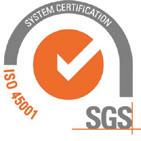
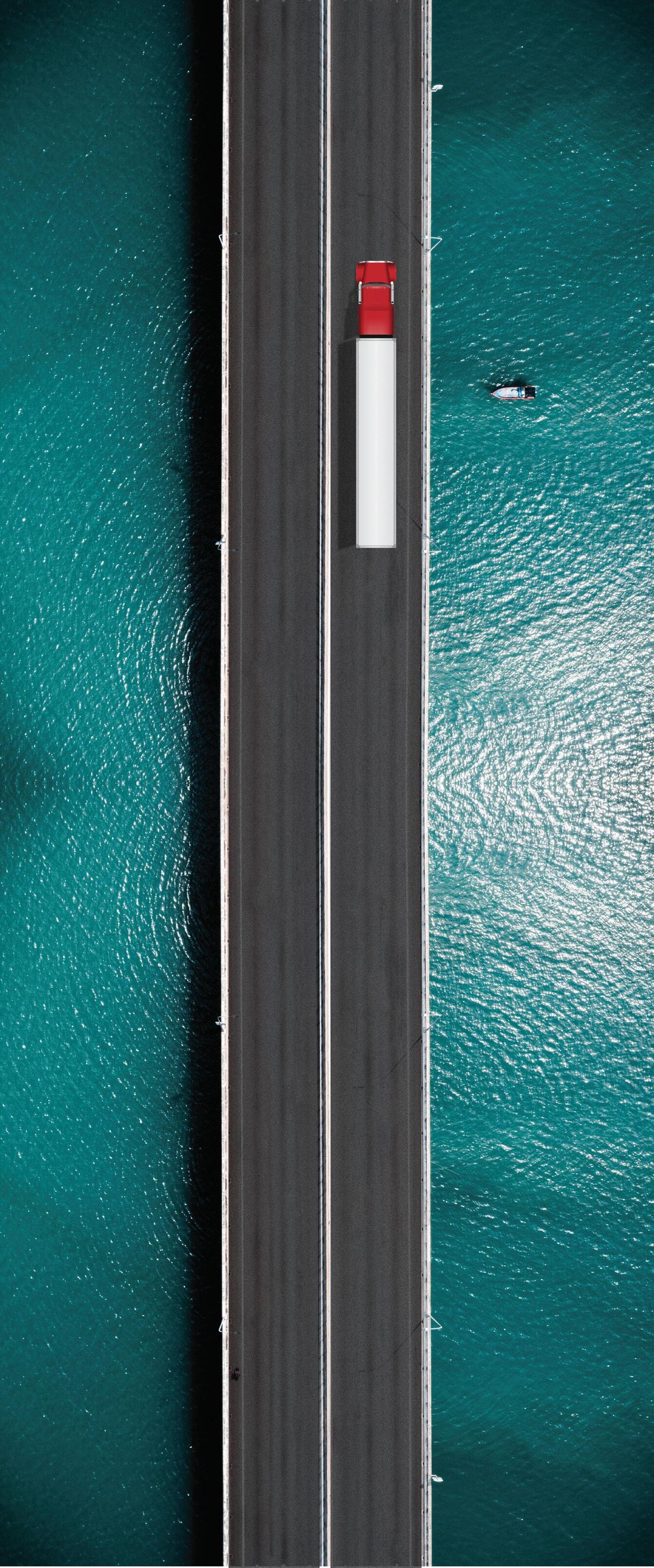


Mind-set is crucial in the shipping sector because it influences how personnel approach their tasks
When we encounter serious events, we frequently discuss the importance of changing our mind-set. For instance, when I was growing up, my mom was hospitalised, and my dad had to balance home, office, and hospital. When mom returned home, my siblings and I expressed our dissatisfaction about missing her cooked meals, despite the fact that our dad cooks excellently. That day, my mother decided that her children, regardless of gender, ought to be independent and strong. She taught us to cook and manage the house from a young age.

A mind-set is a collection of attitudes a person holds about himself and their skills. It can be either fixed or growing. A fixed mind-set holds that intelligence and abilities are fixed characteristics that cannot be modified. A growth mind-set holds that intelligence and abilities may be improved through hard work and dedication.
Mind-set is crucial in the shipping sector because it influences how personnel approach their tasks. Those with a fixed mind-set may give up when faced with a difficulty, whereas those with a development mind-set are more likely to endure and learn from their mistakes. Let’s delve into why this shift in thinking is essential:
Receptivity to change: The maritime industry operates in a changing environment. Technological advances, environmental concerns, gender balance and changing global trade patterns necessitate
adaptation. A progressive mind-set promotes receptivity to change, enabling businesses to remain relevant and competitive.
Digital Strategy: While the shipping sector has made progress in vessel technology, it is falling behind in digital adoption. A modern thinking recognises the necessity for a digital strategy. Strategic thinking, innovation, and continuous education are critical components of this change.
Strong public voice: Shipping has never had a powerful external voice. We have to alter this viewpoint. Through the use of blogs, podcasts, and easily accessible media, we can debunk myths and highlight the industry’s value to younger generations. A forward-thinking perspective motivates us to effectively communicate across conventional boundaries.
Attract young talent: The shipping sector frequently fails to draw in young talent and lacks good visibility. A forward-thinking outlook can alter this understanding. We can draw in new talent by emphasising the industry’s significance, environmental initiatives, and career prospects.
In short, a growth mind-set is the compass that directs the shipping sector towards a more sustainable, efficient, and connected future. So let us continue to cultivate a growth mind-set and set sail for new possibilities!

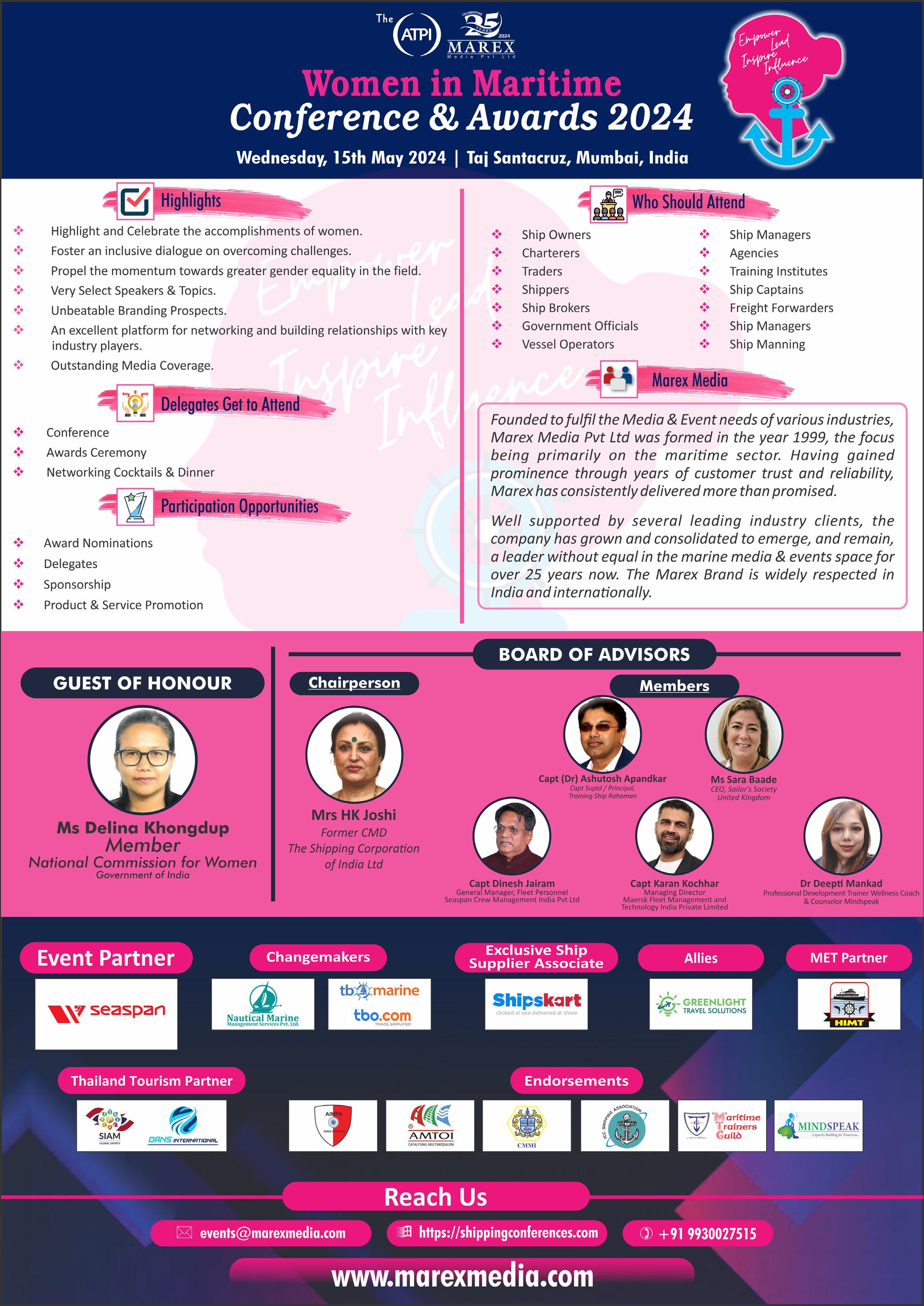


Brookes Bell, the leading technical and scientific consultancy for the marine and energy sectors, has recruited Dhaneshwar Nath as a Managing Marine Engineer in their Shanghai office. Nath, with his extensive expertise and distinguished career spanning over two decades, further enhances Brookes Bell’s commitment to delivering industry leading services to clients across the region.
This strategic hire follows the recent addition of Captain Hisyam Haron in Singapore, showcasing Brookes Bell’s deep commitment to the APAC region and its ambitious vision for the future.
Having graduated from Birla Institute of Technology and Science in 2005 with a degree in Marine Engineering, Nath commenced his career at Anglo-Eastern where he worked his way up the ranks to become Chief Engineer. His tenure at Anglo-Eastern culminated in his appointment as Vessel Manager, based in Hong Kong, where he demonstrated exceptional leadership and operational prowess. During his tenure, he was responsible for handling geared bulk carriers, creating drydock specifications and overseeing major vessel drydocking and retrofit operations, including engines and ballast water systems.
In addition, he has also built up extensive experience of contact damage and damage assessment, allowing him to expertly assist H&M underwriters, P&I Clubs, Charterers and maritime law professionals with claims and disputes.
Now based in Shanghai, Nath brings a wealth of experience to the role, having navigated various facets of marine engineering throughout his career. His mastery in vessel operations, safety management, and regulatory compliance positions him as a cornerstone in Brookes Bell’s mission to provide innovative solutions and expert consultancy services to clients in Asia and beyond.

Commenting on Nath’s appointment, Tom Ainsley, Director of Brookes Bell Asia-Pacific, noted, “Nath’s arrival marks a significant milestone in our journey to strengthen our Asia-Pacific team. With his exceptional talent and expertise, he is the perfect fit to help us elevate our services and exceed client expectations in this dynamic shipping region.
“As we continue to expand our team in the region, we remain steadfast in our commitment to sourcing the best and brightest talent in the industry, and Nath is a prime example of that. Brookes Bell is dedicated to maintaining our position as a leader in providing exceptional services to our clients by ensuring we have the very best specialists available globally,” he added.
Nath’s addition underscores Brookes Bell’s dedication to attracting top-tier talent and fostering a culture of innovation and excellence. His presence in Shanghai signifies the firm’s commitment to providing localised support and tailored solutions to clients across Asia and the Asia-Pacific region.

Why is it necessary for states to adopt the latest international legal instruments in the field?
When it comes to a nation’s economy, food security, health, fisheries, marine life, and tourism sectors, oil pollution can have a catastrophic impact. Liability
and compensation will be important to consider, along with the effects of the spill, the financial consequences, and the costs involved in recovering the ecosystem. The top 20 major spills contribute 2,384,000 metric tonnes. M/T Atlantic Empress contributed to having the largest spill in 1979 off Tobago, West Indies, spilling around 287,000 metric tonnes of oil. According to the provisions of the insurance, pollution damage, including that caused by oil, is covered by the insurer of a vessel’s
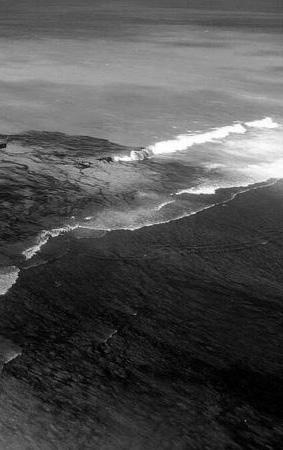
third-party risks, which is often a Protection and Indemnity Club (P&I Club). Under some conditions, a national or international fund may be able to provide compensation.
Bunker Convention: The Convention was adopted to ensure that adequate, prompt, and effective compensation is available to persons who suffer damage caused by spills of oil when carried as fuel in ships’ bunkers.
Simplifying with an example will explain why it is necessary for the states to adopt the latest international legal instruments in the field.
The MV Wakashio had a deadweight tonnage of 203,000 tonnes, a length overall of 299.95 metres (984 ft 1 in), and a beam of 50 metres. An oil spill occurred after the Wakashio ran aground on a coral reef on July 25, 2020, offshore of Pointe
d’Esny, south of Paris, spilling around 1000 metric tonnes of oil. The Bunker Convention states that ship owners are liable for losses brought on by oil spills. As a result, the agreement places strict obligations for these losses on the vessel owners and their insurance providers. Mauritius is a party to the LLMC 1976, which governs compensation amounts. In 1996, the convention was revised to raise the compensation cap. However, the 1996 Protocol was not ratified by Mauritius.
LLMC 1976
1996 Protocol
Difference
USD 18.7m
USD 65 m
USD 46.3 m
Mauritius ratified the 1996 Protocol; it could have received up to $46.3 million in addition. This is why the states are encouraged to adopt the latest international legal instruments in the field. Especially to the SIDS (small island developing states), which has an entire economy dependent on oceans.
India has already taken steps to ratify the (Bunker Convention) of the International Maritime Organization (IMO). The Union Cabinet has approved India’s accession to this convention. However As of 18th March 2024(status report from IMO website), India has not ratified the convention. MMT
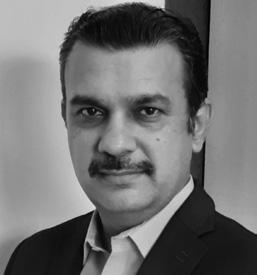


Technology group Wärtsilä is calling for urgent action to enable more flexibility in power systems around the world, as we reach a crucial renewable energy tipping point.
According to the IEA World Energy Outlook1 the amount of renewables deployed globally is set to double by 2030, with inflexible generation forecast to decline rapidly, including a 20% reduction in coal and 34% reduction in oil generation, equating to over 2,300 TWh in lost generation.
At COP28, the United Nations Framework Convention on Climate Change (UNFCCC) agreed to transition away from fossil fuels and triple renewable power by 2030, which would make this tipping point even more pronounced.
Renewable energy will become the world’s largest electricity source by 20252, and it is vital that flexible technologies are deployed at scale and pace to support that transition to avoid widespread curtailment, increased prices, greater fluctuations, and higher emissions.
Anders Lindberg, President, Wärtsilä Energy, said:
“We stand at a tipping point, with unprecedented levels of renewables being added globally over the next decade and huge volumes of traditional inflexible assets on the cusp of retirement.
“Over the past decade we have transitioned from renewables requiring financial support, to a position where inflexible assets, such as oil, coal and CCGTs (combined-cycle gas turbines) and nuclear are no longer viable without political support.
“This presents us with a unique opportunity: to add more renewable energy than ever before on to our grids, build the right level and right type of flexibility into our power systems and phase out inflexible assets while converting to sustainable fuels. Ultimately this will ensure a transition that fully phases out fossil fuels and is affordable, low carbon and resilient.
“The decisions that we make today in designing our power systems will echo for generations, as we aim to tackle climate change and embed the
right technologies to accelerate the deployment of renewables.”
To ensure we address this tipping point, Wärtsilä is calling on policy and decision makers around the world to:
1. Choose the right technologies to accompany renewables, including grid balancing engines and energy storage to enable and accelerate the energy transition.
2. Enable and encourage flexibility through regulations and policies that incentivise investments in flexible generation assets.
3. Introduce shorter timeframes for power trading markets: Instead of trading in hourly periods, power trading markets should be operating in 15-minute, or even 5-minute, time resolutions.
According to IEA World Energy Outlook report, gas generation will increase 1% by 2030 and decrease 5% by 2050 (TWh)3, however global utilisation and the emissions from the sector will drop significantly, as we reach an additional energy tipping point. Gas will increasingly shift from providing baseload power to providing flexible and firm capacity for real-time and seasonal renewable balancing.
However, not all flexible generating assets are created equal. Inherently wind and solar power is intermittent, so flexible assets are required to manage minute-level, daily and seasonal variations in renewable generation, to ensure the lowest carbon and most cost-effective power systems.
Engines are the optimal flexible power generation technology choice over aeroderivative turbines in a five-minute market, as they:
• Can outperform gas turbines when dispatched in real-time markets (i.e. 15- and 5-minute power trading intervals). One study found that an engine power plant can capture 60% more value than an
equivalent aeroderivative gas turbine plant over 20 years4.
• Have 10% lower greenhouse gas emissions than aeroderivative gas turbines5.
• Can run on sustainable fuels once they are available for the energy sector, and can switch seamlessly between different fuels.
• Can ramp up in two minutes to support or balance intermittent renewables.
• Have no minimum uptime or downtime and can start / stop as many times as needed with no additional cost or impact on maintenance.
• Have high full load efficiency and can maintain it across a wide range of outputs – outperforming aeroderivative turbines under both normal and extreme conditions.
• Can operate at loads as low as 10%, making them ideal for providing spinning reserve.
• Can reduce curtailment.
Anders Lindberg continued: “Grid balancing engines will play a vital role in bridging to higher renewable systems, as they are the most efficient power generation technology to support intermittent wind and solar. In the future they can run on sustainable fuels to create 100% renewable power so there is no chance of stranded assets. Fuel flexibility is vital for ensuring a dependable source of electricity.
“We have all the technologies required to achieve net zero. It is essential that the correct incentives and policies are put in place today, to enable the deployment of flexible technologies and keep costs and emissions low, while shaping the power systems of tomorrow.”





Both can happen when you just add the We offer excellence Developed Over Time so that you can speed up your growth with our expertise.
Learn from the experts, faster & better than anyone else.

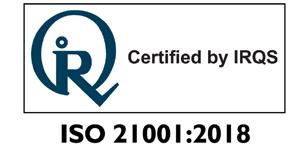




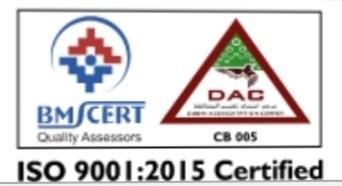

Diversity and inclusion in the workplace is becoming increasingly important for both current and potential employees. Since 1988, the International Maritime Organisation (IMO) has made a concentrated effort to help the shipping industry progress and support women in achieving
representation that is consistent with twenty-first century standards.
It begs the question of why gender parity and the inclusion of women in the marine sector are such hot topics. For a number of reasons, having a gender

balance in the shipping industry—or any other workplace—is quite important; which are:
More robust industry: Economic growth is typically higher in nations where there is greater gender equality. Businesses with a higher percentage of female executives perform better. Thus, a more vibrant industry is a result of gender balance.
Achieve Sustainable Development Goals (SDGs): Gender equality is one of the primary goals of the United Nations’ 2030 Agenda for Sustainable Development. Empowering women in the marine sector is consistent with SDG Goal 5: Achieve gender equality and empower all women and girls.
Enact more legislation: Women’s participation in peace agreements makes them more durable. Parliaments with more women pass legislation on vital social concerns like health, education, and antidiscrimination.
Attractiveness and Competitiveness: Gender balance has a favourable impact on competitiveness because a diversified workforce, including women, makes jobs in the industry more appealing.
Family-Friendly working practices: It is imperative to implement work practices that are family-friendly. Shorter contracts and family-friendly policies can be game-changers for seafarers, who frequently spend lengthy periods at sea.
Balanced Approach: A balanced approach to implementing human rights remedies and protections at sea is reflected in gender equality. Even though they make up a small percentage of the workforce, which is predominately male, women support equality and reform.
According to the BIMCO/ICS 2021 Seafarer Workforce Report, women make up just 1.2% of all seafarers worldwide. With the report projecting 24,059 women serving as seafarers—a 45.8% increase over the 2015 data—it shows a good trend in gender balance.
However, a lot more needs to be done to achieve gender balance in the shipping industry, which is not only a matter of fairness but also a strategic imperative for progress and sustainability.
We at Marex Media are highly committed to the IMO’s goal of gender equality in the maritime industry. To guarantee that the industry meets SDG Goal 5, we are pleased to announce the third edition of The ATPIMarex Women in Maritime Conference & Awards 2024, which will take place on May 15, 2024, at the Hotel Taj Santacruz, and welcome you all, to actively engage in building a culture of diversity and inclusion. For more details:
https://shippingconferences.com/wp/registrationform/.
I echo the thoughts of Nellie Borrero, Managing Director, Senior Strategic Advisor – Global Inclusion & Diversity at Accenture: Diversity is a fact, but inclusion is a choice we make every day. As leaders, we have to put out the message that we embrace and not just tolerate diversity. MMT
“We live in a world that is driven by the need to address environmental problems and promote long-term viability, and I strongly believe we should highlight the need of integrating eco-friendly solutions into corporate operations,” expresses Capt Ankush Gupta, Chief Operating Officer, The Great Eastern Shipping Co Ltd (GESCO), Mumbai.
Aside from his position as GESCO’s COO, where he is heavily involved in incorporating new technology into GESCO’s operations, he has a personal interest in the latest electronic gadgets and technological advancements.
An avid reader about shipping, novels and watching movies, he prefers biopics, murder mysteries, and thrillers. Ankush enjoys cycling when he has the time, and listens to music of various genres. He also enjoys watching sports, particularly cricket, lawn tennis, and football.
Spending time with his family and a few close friends is also an important part of his daily life, since it grounds him and fosters compassion, which he brings in abundance to work.
In an exclusive conversation with Ms Delphine Estibeiro from Marex Media, Ankush shares his thoughts on GESCO’s culture, gender equality initiatives, et al.
GESCO is India’s largest private sector shipping company; could you tell us about the most essential features of the company’s culture?
GESCO takes pride in its culture of excellence and integrity, which

prioritises safety, environmental protection, energy efficiency, and quality operations. This culture has a 75-year history in the marine sector, a tribute to our founders’ vision, who, despite all odds, tapped into an unexplored market and succeeded.
Our approach is based on honesty and commitment, with a focus on the safety of our employees, cargo, the environment, and operational integrity. This mind-set not only drives our operational excellence, but it also recognises the rich history and wisdom passed down through centuries. Our promoters’ involvement and understanding have helped to create a workplace that emphasises teamwork, safety, ethics, and mutual respect, resulting in a productive and harmonious atmosphere. These principles drive our business forward and ensure that we continue to have a positive impact on the industry in which we operate.
How does GESCO aim to be a leader in environmental initiatives?
At GESCO, we are dedicated to leading the maritime industry in environmental stewardship. To considerably minimise our GHG emissions, we have used a variety of energy-saving devices, propeller modifications, and innovative eco-friendly high performance hull coatings. We are also stepping up our efforts to monitor and reduce emissions through partnerships with some innovative platforms, which will improve our ability to assess and manage our environmental impact accurately.
In 2013, we retrofitted our first energy-saving device. In 2018, we established an Environment

Initiatives working group to conduct research on decarbonisation options. In 2022, we conducted India’s first biofuel testing on an MR tanker in international seas, utilising biofuel Blended VLFSO (B20) (produced from UCO).
In our pursuit of decarbonisation and addressing the hurdles given by new environmental legislation, we continue to assess wind-assisted propulsion systems, solar panels, air lubrication, and other technologies.
Our extensive research also includes alternative fuels such as ammonia, hydrogen, and methanol, focusing on their characteristics, storage requirements, and engine compatibility.
Our efforts to decarbonise are critical as we examine the environmental, operational, and economic consequences of implementing decarbonisation solutions in our fleet, ensuring that GESCO continues at the forefront of the maritime industry’s environmental change.
On gender equality, what steps should be taken to boost the representation of women in all areas of shipping, both shore and sea?
There are numerous initiatives that can be implemented to improve representation. However, I’ll focus on what we’ve been doing as a firm to improve the representation.
At GESCO, we are committed to improving gender equality in all aspects of shipping, onshore and at sea. Recognising the historical underrepresentation of women in maritime jobs, we are dedicated to making considerable progress towards a more inclusive industry. Our strategy includes a strong focus on boosting the number of women in maritime roles, beginning with activities at the Great Eastern Institute of Maritime Studies (GEIMS). We are making concerted efforts to increase the admittance rate of female trainees, with the goal of allowing more women to enter the sector. This approach is critical not only for GESCO’s diversification, but also for the overall maritime industry. By increasing women’s representation, we are addressing the core cause of gender imbalance and setting a norm that we hope will inspire similar measures throughout the sector.
One of our female GEIMS cadets has been promoted to Chief Officer, demonstrating our commitment to empowering women in the maritime profession. Her advancement through the ranks at GESCO demonstrates not only our commitment to

developing internal talent, but also her abilities and the trust we have in promoting women to top roles.
Another example of lateral hiring is the recent appointment of Trainee Cook, who joined our vessel Jag Pankhi last month, a small but crucial milestone.
Our dedication to gender equality extends beyond our maritime roles and includes our onshore businesses as well. Women currently make about 24% of our onshore workforce, a proportion that has grown dramatically over the last 7-8 years. This growth underscores our long-term efforts to build a more inclusive industry that supports and promotes gender equality at all levels.
We are committed to creating a supportive working atmosphere that tackles the special problems that women experience. Our strict adherence to antidiscrimination and anti-harassment standards demonstrates this dedication. We hope to ensure that all employees, regardless of gender, feel safe, appreciated, and respected by creating an environment in which such matters are openly discussed and dealt with quickly.
How do you stay on track to achieve your long-term objectives, both personal and professional?
In managing GESCO’s progress towards its longterm goals, I promote a balanced approach that combines rigorous strategic planning with the flexibility to respond to new facts and situations. Setting specific, quantifiable goals and tracking our progress towards them is a discipline I personally practise. This dual focus allows us to stay true to our objective in the face of the shipping industry’s rapid changes and challenges.
Professionally, I am fully devoted to creating an environment of continual improvement and
innovation at GESCO. The shipping industry is continually evolving, influenced by technical advances, regulatory changes, and economic upheavals. Staying current on these advances and implementing cutting-edge technologies and methodologies into our operations is critical to our agility and resilience.
By implementing these practices, we hope to not only reach but exceed our strategic objectives, ensuring that GESCO not only survives but flourishes in the competitive worldwide market. This proactive approach to leadership and management is critical for negotiating the intricacies of today’s shipping sector and guiding our organisation to a prosperous future.
On a personal level, integrating these professional duties with my life outside of work is critical. I find refuge in calmer moments spent with family, which offer a break from the high stakes of business leadership.
How do you believe GESCO will evolve in say two years, and how do you envision yourself driving that change?
Looking ahead, I envision GESCO expanding its international reach, maybe augmenting and modernising our fleet if market conditions are favourable. In the next two years, I anticipate a more thorough integration of technologies into our operations, which is critical for increasing efficiency and achieving operational excellence. In addition, we intend to broaden our offerings and capitalise on rising market trends.
My role is to lead these developments, working with a superb team of specialists to promote growth and ensure that GESCO succeeds at operating an efficient and compliant fleet.
For me, it is critical that we collaborate, adapt, innovate, and improve our operational quality by focusing on sustainability and incorporating ecofriendly practices and technologies. MMT
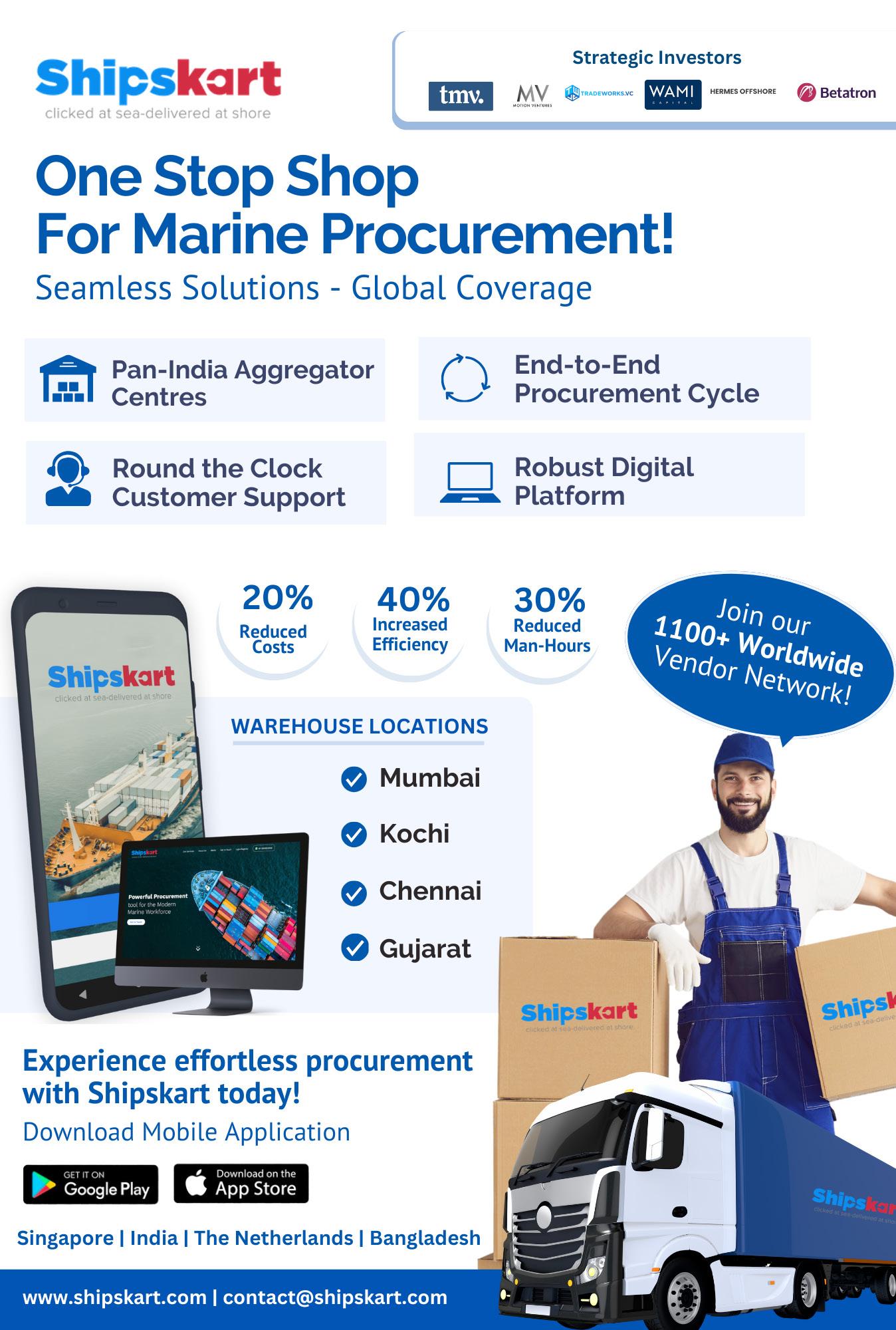
To me, National Maritime Day stands not only as a reminder of India’s deep-rooted connection to the seas, but also the immense potential that our maritime sector holds for the future
- Capt Kamal Chadha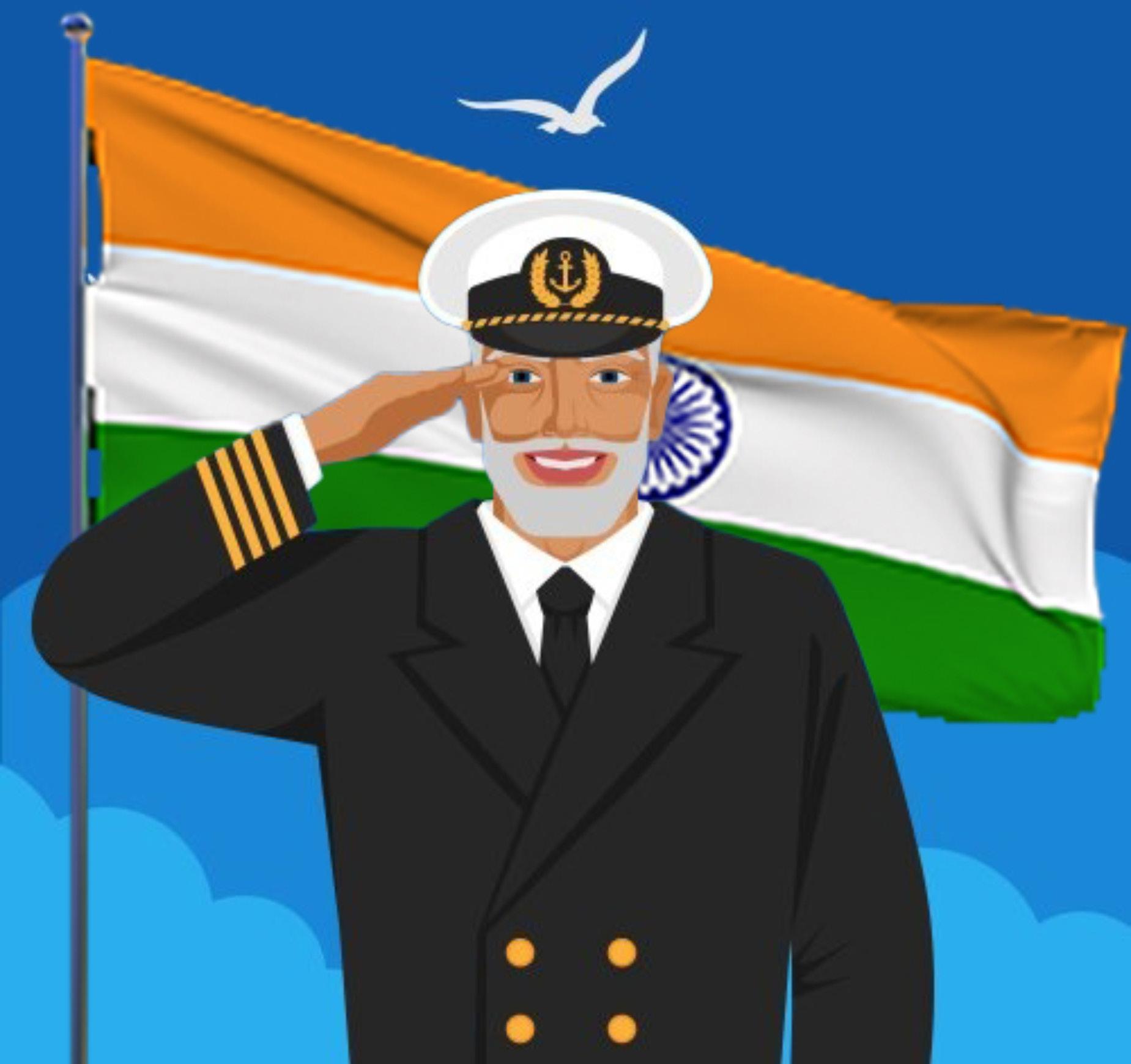
India’s
holds
National Maritime Day
a special place in
my
heart as it symbolizes the rich maritime history and heritage of our nation. Celebrated on April 5th every year, this day commemorates the maiden voyage of the first Indianowned ship, the SS Loyalty, which set sail from Bombay to London in 1919. This historical event marked a significant milestone in India’s maritime journey and laid the foundation for the development of our maritime industry.
To me, National Maritime Day stands as a reminder of India’s deep-rooted connection to the seas and the immense potential that our maritime sector holds. As a country with a vast coastline stretching over 7,500 kilometers, India has always been inherently linked to the oceans that surround us. Our maritime heritage dates back centuries, with a legacy of seafaring, trade, and cultural exchange that has shaped our identity as a maritime nation.
On a personal level (and as a former seafarer), National Maritime Day serves me as an eternal source of inspiration and pride. It reminds me of the countless sailors, navigators, and merchant seafarers who braved the high seas to connect distant lands, foster trade relationships, and promote cultural exchanges. Their immense resilience, skill, and dedication have contributed to the growth and prosperity of our nation, laying the foundation for a vibrant maritime economy.
Moreover, National Maritime Day underscores the importance of our maritime industry in driving economic growth, promoting international trade, and enhancing global connectivity. India’s ports serve as vital gateways for trade, facilitating the movement of goods and commodities that fuel
our economy and support livelihoods across the country. The maritime sector not only plays a crucial role in bolstering our economy but also in promoting strategic interests, national security, and environmental sustainability.
As a citizen of a maritime nation, National Maritime Day inspires me to appreciate the significance of our seas and oceans in shaping our history, culture, and economy. It reminds me of the need to protect and preserve our marine resources, promote sustainable practices, and strive for maritime excellence in all facets of our lives. Whether through supporting indigenous shipbuilding, fostering marine research and innovation, or promoting maritime education and training, we can contribute to the growth and development of our maritime sector.
Furthermore, National Maritime Day serves as a call to action to harness the potential of our blue economy and leverage our maritime strengths to propel India towards a brighter future. By investing in port infrastructure, maritime technology, coastal security, and environmental conservation, we can unlock new opportunities for growth, create employment, and enhance our global competitiveness in the maritime domain.
In conclusion, India’s National Maritime Day holds profound significance for me as a celebration of our maritime heritage, a tribute to our seafaring pioneers, and a testament to the immense potential of our maritime sector. It serves as a reminder of the critical role that our seas and oceans play in shaping our past, present, and future, and inspires me to embrace our maritime legacy with pride, responsibility, and dedication. Let us all join hands in celebrating National Maritime Day and work towards a prosperous and sustainable maritime future for India.
Above all, I am eternally grateful to this industry and profession that has given me a livelihood, fed, clothed and educated my family, and provided me a place of pride in my community and in my nation.
Happy National Maritime Day to All. Jai Bharat!
MMT
Steerprop to supply Main Propulsion and Tunnel Thrusters for Canadian Coast Guard MultiPurpose Vessels Program
Steerprop has been chosen to provide a comprehensive Polar Class 4 (PC 4) propulsion package for the Canadian Coast Guard’s MultiPurpose Vessels (MPVs) renewal program.
The contract entails the supply of propulsion packages for the initial six MPVs, integral to Canada’s National Shipbuilding Strategy (NSS). Steerprop’s solution comprises two tunnel thrusters for auxiliary propulsion and two Contra-Rotating Propulsors (CRP) for main propulsion, meticulously engineered to meet the stringent operational demands of the vessels in challenging Arctic waters.
Recognized for their expertise in ice-strengthened Arctic propulsion systems, Steerprop’s solution ensures exceptional operational reliability, maneuverability, and efficiency, essential for the diverse missions undertaken by the Canadian Coast Guard in the Eastern and Western Seaboards and the western and lower Arctic.
The CRP units not only serve propulsion needs but also facilitate efficient ice management, crucial for maintaining safe navigation channels and responding to emergencies in icy conditions. With a design that optimizes efficiency even at lower power levels, Steerprop’s solution minimizes energy consumption while maximizing operational versatility and reliability.
Juho Rekola, Director of Sales and Project Management at Steerprop, stated, “Our commitment to delivering the best possible propulsion systems and engineering support for our customers is at the heart of everything we
 JUHO REKOLA Director of Sales and Project Management at Steerprop
JUHO REKOLA Director of Sales and Project Management at Steerprop
do at Steerprop. This project exemplifies our resolve to support our customer in enhancing vessel performance and environmental friendliness without compromising on stringent requirements for operational availability,”
He continued, “This contract not only guarantees significant growth and a stable workload for an extended period but also plays a vital role in shaping the future of Steerprop. Establishing a permanent presence in Canada, this project further strengthens our expansion efforts across North America.”
“Seaspan Shipyards is pleased to award this missioncritical propulsion system contract which will help enable the Canadian Coast Guard to safely and efficiently operate the MPVs across the wide range of environmental conditions encountered in Canadian waters.” said David Belton, Senior Program Director, Multi-Purpose Vessels at Seaspan Shipyards.
- MMT

Daimler Truck has selected global logistics leader
DB Schenker to operate its new 19,000 square metre warehouse in Melbourne, encompassing more than 40,000 SKUs for truck and bus parts. The new warehouse, located about 23km from the Melbourne CBD and 20km from Tullamarine Airport, has been designed to strengthen Daimler Truck’s ability to supply stock and parts across Australia and New Zealand, and stocks everything from small washers to full truck cabs.
“This warehouse is the first Daimler Truck operation in the world to stock parts for three different truck brands all under the one roof,” says Craig Davison, CEO, DB Schenker Australia and New Zealand Cluster.
“Daimler Truck Australia Pacific offers a vast range of class-leading vehicles covering every segment of the Australian road freight industry with its Mercedes-Benz, Freightliner and Fuso trucks, as well as Fuso buses.
“We were delighted to build on our long-term and productive relationship with Daimler Truck with the contract to operate this new warehouse,” he adds.
The warehouse has more than 50,000 individual locations, including a 4,000 square meter mezzanine level, and customised racking to store large truck cabs. A super awning approximately 3,400 square metres was constructed so that parts could be loaded and unloaded in full protection from the weather. The warehouse itself has a high clearance section, with additional pallet storage above 10m in height.
The building has a five star Green Star rating, and includes EV charging stations that staff can use, a focus on recycling, and LED lighting with motion control throughout the facility. The focus on sustainability aligns with DB Schenker’s global commitment towards a future of cleaner logistics.
In addition to operating the warehouse, DB Schenker also handles the leasing of the premises in Melbourne’s West.
“We worked with Daimler Truck to find a solution that suited their needs now, and into the future. The site typically has more than 50 employees on-site on any given day, with more during peak demand periods,” said Davison.
“There’s flexibility built into the warehouse operations, because we know needs can change. Daimler Truck is dedicated to minimising the time that its customers’ trucks and buses are ‘off road’ – and this warehouse will help supply spare parts more efficiently to get vehicles back on the road swiftly,” he added.
“Daimler Truck is a world-class brand, and DB Schenker has been able to leverage our considerable global experience and resources to set up warehouse operations that maximise efficiency and help Daimler Truck deliver on their customer service goals.”
Daimler Truck Australia Pacific President and CEO, Daniel Whitehead, says the introduction of the new warehouse represents a big step forward for the company. “This new dedicated truck and bus parts warehouse is at the centre of our commitment to our customers across Australia. I would like to thank DB Schenker for working with us to introduce this sustainable state-of-the-art facility that will allow us to better serve our customers and meet their specific needs.”
- MMTIn a bid to bolster its maritime insurance capabilities and reduce reliance on foreign P&I clubs, India is setting sail on a new venture. On April 16th, Directorate General of Shipping in association with The Shipping Corporation of India Limited (SCI) hosted a Joint Interactive Session at SCI Auditorium in Mumbai, to unveil its proposal for establishing a domestic Protection and Indemnity (P&I) club for coastal ships and vessels operating on inland waterways.
The session aimed to address concerns and elaborate on the details this ambitious plan, which seeks to provide Indian shipowners with the option to purchase open-ended high-risk covers, traditionally hesitated upon by conventional players. P&I insurance, a critical component in the maritime industry, shields shipowners from potentially exorbitant costs arising from accidental harm to people, property, and the environment.
Currently, Indian ships predominantly rely on foreign P&I clubs for specialized insurance, leading to foreign currency outflows and a dearth of local expertise. With no P&I club of its own, India is taking proactive steps to establish its presence in the maritime insurance sector. The proposed Indian P&I club would offer local coverage, saving on foreign currency expenditure, enhancing India’s maritime legal and arbitration expertise, and expediting claim settlements through its local presence.
The session commenced with a presentation by Capt Manish Kumar, Nautical Surveyor-Cum-
Deputy Director of Shipping (Tech/Crew), who elucidated the basics of P&I insurance and outlined the benefits of an Indian P&I club. While emphasizing the need for local coverage, Capt Kumar highlighted the challenges posed by the relatively small size of the Indian fleet and the formidable competition from international players.
Subsequently, Mr Hariharan Subbiah, representing SCI, delved into the company’s history, corporate structure, and the imperative of P&I insurance in today’s maritime landscape. Citing recent catastrophic incidents like the MV Dali collision and the Costa Concordia sinking, he underscored the critical role of P&I insurance in mitigating unforeseen liabilities.
Setting the tone for the panel discussion titled Establishment of indigenous P&I cover/products in India were presentations from Mr Anil Devli CEO, Indian National Shipowners Association (INSA) and Capt Rakesh Singh, Honorary Secretary, Indian Coastal Conference Shipping Association (ICCSA) who offered valuable perspectives on the significance of P&I insurance from a shipowner’s standpoint and the regulatory framework governing liability underwriting in India.
The spotlight then shifted to Ms Shashikala Sreedharan of New India Assurance Co Ltd, who provided insights into the current P&I products offered by the company and its collaboration with SCI to offer comprehensive coverage to shipping companies.
Mr Sanjay Mokashi from GIC Re elucidated the intricacies of reinsurance and its pivotal role in bolstering the liability cover provided by insurers. He emphasized GIC Re’s expertise in supporting P&I clubs and reiterated its commitment to the maritime insurance sector.
The event was graced by eminent personalities including Capt BK Tyagi, CMD, SCI and Mr Shyam Jaggannathan, IAS, Director General of Shipping marked a significant milestone in India’s journey towards maritime insurance independence. As the nation embarks on this transformative voyage, stakeholders remain optimistic about the prospects of a thriving domestic P&I club, poised to propel India’s maritime industry to new horizons of success and self-reliance.
Marex Media

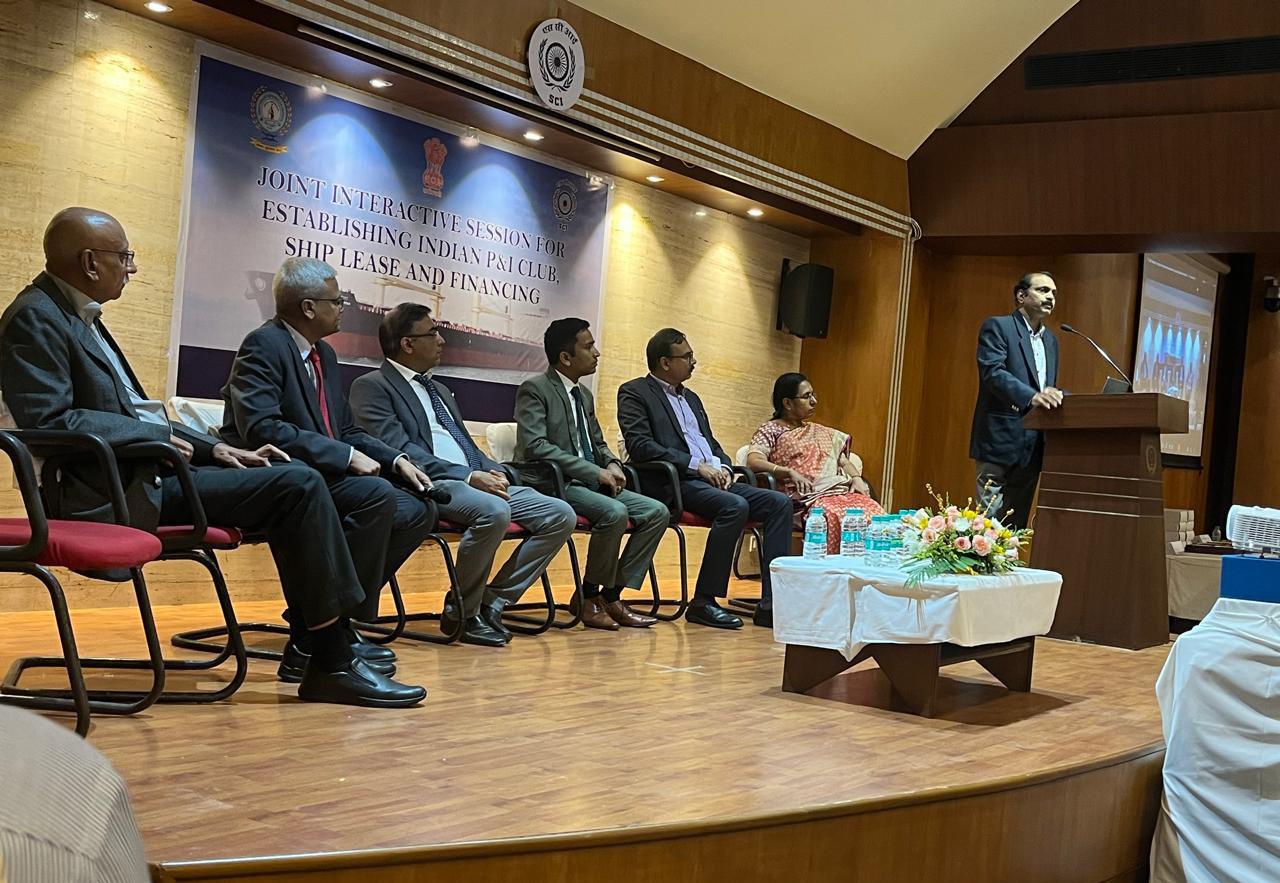

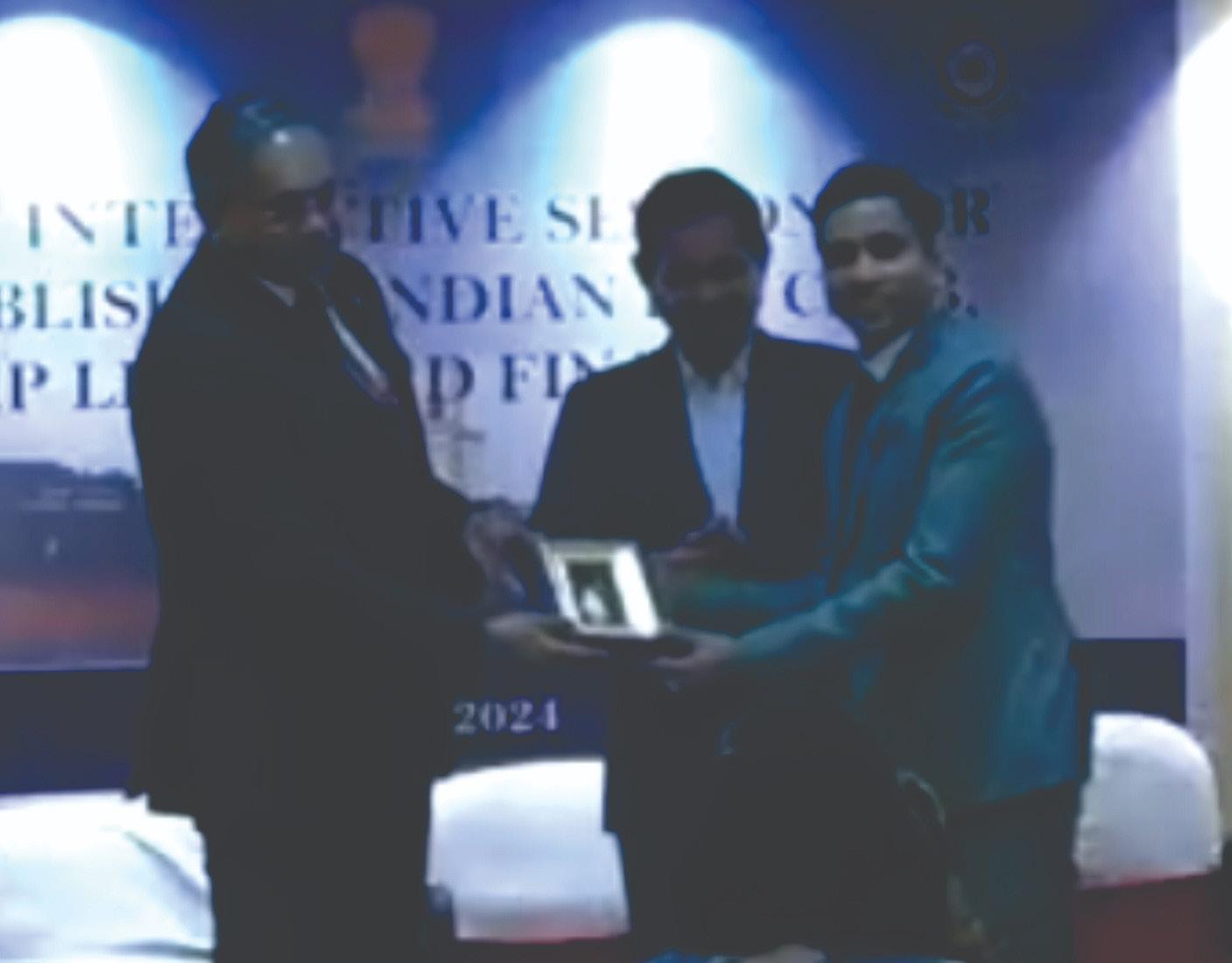


Indian Register of Shipping (IRS), a leading classification society, enters 50th year, marking half a century of commitment to maritime safety, quality, and innovation. The organisation commenced yearlong celebrations on its foundation day 4th April by unveiling a series of initiatives.
Starting off the celebrations is the debut of IRS’ 50th year commemorative logo. The logo symbolises progress, honouring the organisation’s illustrious history while embracing the future. A compass
and collaborative motifs are embedded in the logo, evoking movement and progress, reflecting the IRS’s evolution over past five decades.
IRS also launched its new strapline, “Powered by Passion. Driven by Values.”, a statement that reflects the organisation’s relentless pursuit of excellence, fuelled by its unwavering dedication and enthusiasm. While passion drives every endeavour, integrity, honesty and respect serve as the foundational pillars of IRS.

Adding to the celebrations is the introduction of IRS’ new flag, symbolising the organisation’s commitment to global maritime interests. Furthermore, IRS also released a teaser video that offers a glimpse of its upcoming corporate video.
“In celebrating 50 years of excellence, Indian Register of Shipping reflects on its rich heritage and looks ahead with enthusiasm and determination,” says Mr Arun Sharma, Executive Chairman. “With the introduction of our 50th Anniversary logo, a new strapline and other initiatives, we are reaffirming our commitment to advancing maritime progress. We are grateful to our stakeholders, partners, and employees for their unwavering support throughout the decades.”
As part of its golden jubilee celebrations, IRS will host several events, initiatives, and collaborations

to
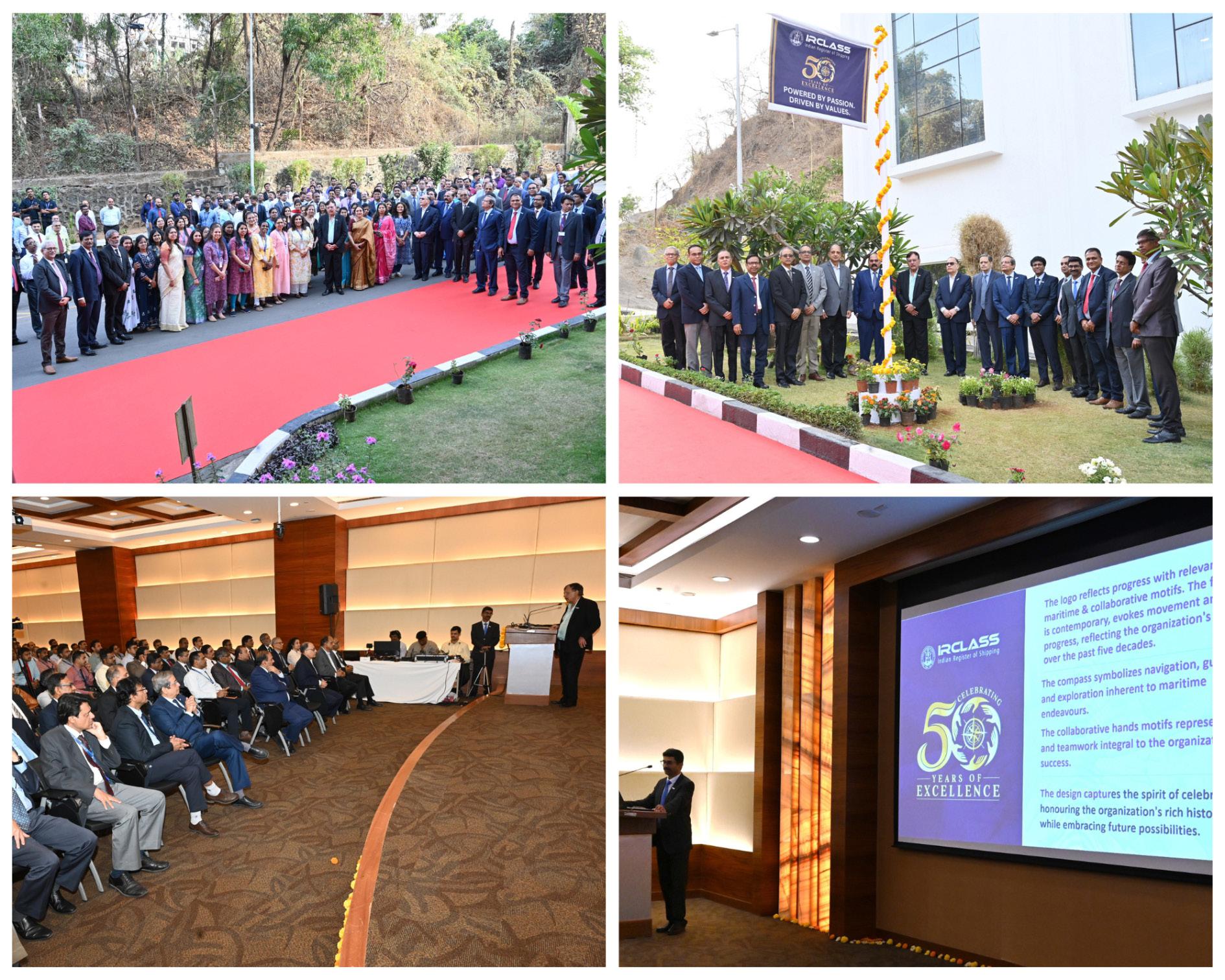

 Rajiv Sarin, Head of Air Lubrication, Alfa
Rajiv Sarin, Head of Air Lubrication, Alfa
Rio Tinto has selected the Alfa Laval OceanGlide fluidic air lubrication system for one of its bulk carriers, as part of its focus to boost vessel energy efficiency and decarbonize shipping. Recognizing the merits of OceanGlide in the market, the company has chosen to retrofit
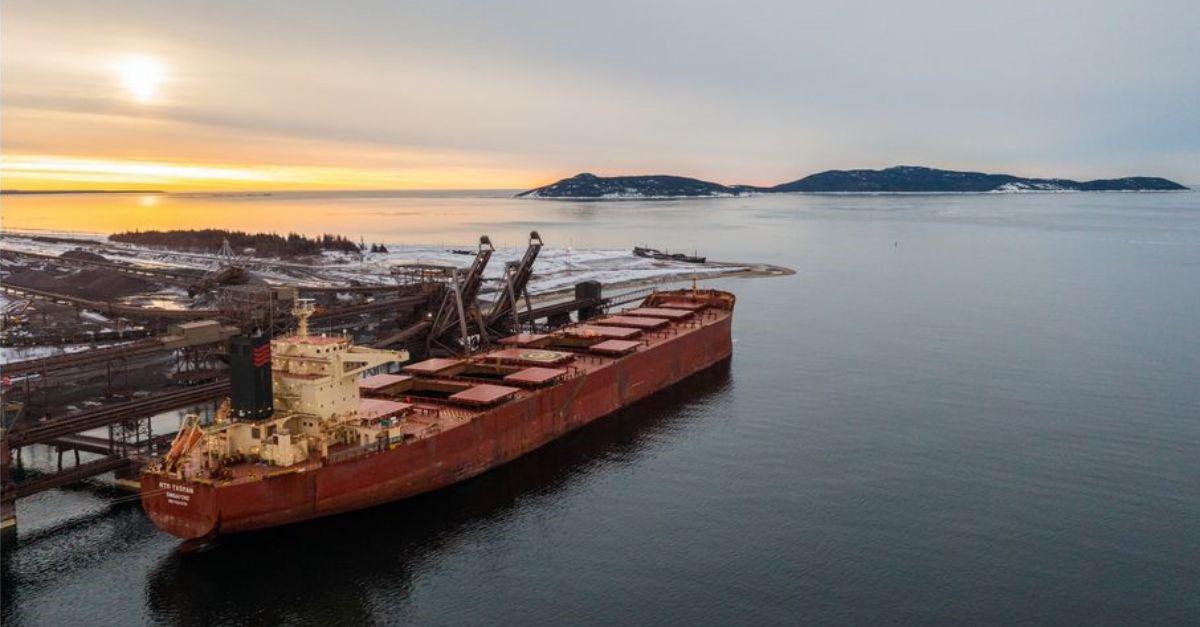
a Rio Tinto-owned vessel with the system to assess this energy-efficient technology for its fleet.
Introduced in 2023, Alfa Laval OceanGlide’s energysaving capabilities have generated considerable interest from shipowners seeking to address energy efficiency and emission challenges.
OceanGlide is proven to reduce specific drag from 50–75%, which means significant propulsion power savings. This leads to lower fuel consumption and reduced CO2 emissions. The combination of these benefits positions it as a future-proof solution for improving vessel performance.
“We are delighted about OceanGlide being selected as one of the promising technologies that can support Rio Tinto in its decarbonization journey,” says Rajiv Sarin, Head of Air Lubrication, Alfa Laval. “By providing innovative solutions, like OceanGlide, we empower our customers to achieve both efficiency and sustainability. We are proud to be part of the initiative that drives a more sustainable future.”
The solution combines air lubrication with fluidic technology to create an even air layer with high efficiency and little compressor power. Through this innovative approach, OceanGlide creates a more streamlined air layer on the vessel’s flat bottom by dividing the surface into segments, with each segment featuring its own fluidic band. The independent steering of each band allows a more controlled airflow to reduce friction between the hull and water. This distribution of bands into sections creates a more dynamic air layer, maximizing coverage and eliminating passive cavities along the vessel’s underside.
The system requires no structural modifications, except for three to five hull penetrations of a maximum DN150. This ensures easy adaptation to existing classification certificates without necessitating any major changes or conversions, making it ideal for retrofitting as well as for new builds. The fluidic bands, designed with a low profile and no moving parts, can be configured underneath the ship at any shipyard with ease.

The eighth Training Expedition as part of preparation for All Women Around the World Blue Water Sailing (BWS) Expedition, scheduled later this year in September 2024, concluded on 17 Apr 23 at Marve, Mumbai. The team comprising of 12 Women Officers of Indian Army, Navy & Air Force was flagged in by Lt Gen A K Ramesh, Commandant, College of Military Engineering, Pune. This event is being planned and conducted under the aegis of Army Adventure Wing (AAW) and Army Aqua Nodal Centre (AANC) of College of Military Engineering (CME).
The crew is undergoing numerous long & short distance training expeditions aboard the Indian Army Sailing Vessel (IASV) MANYU VIR to build up the proficiency required to undergo such an onerous adventure. Training Expedition VIII was
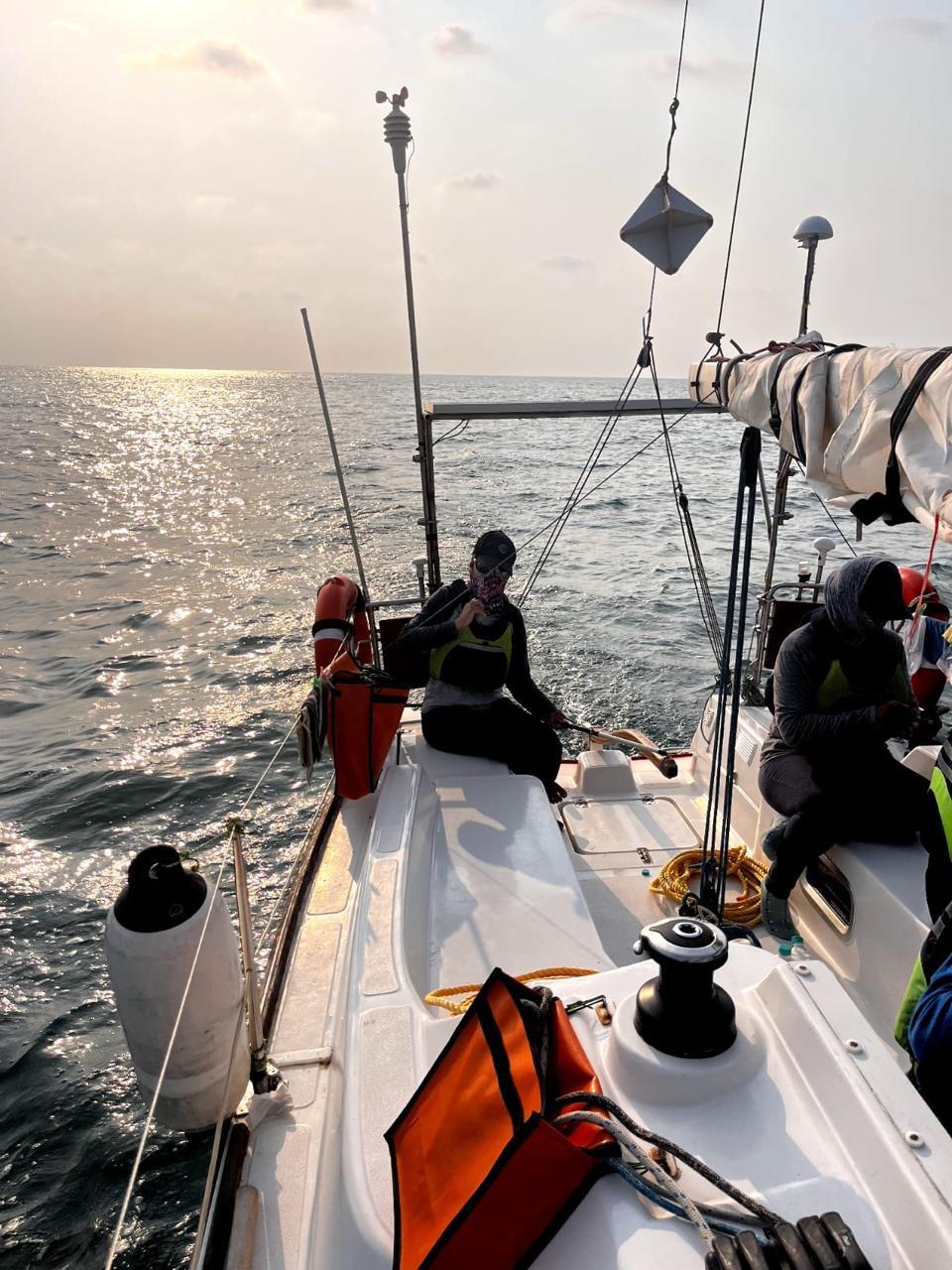

flagged off from Marve, Mumbai on 23 March 24 to Naval Detachment, Androth, Lakshadweep. A team of 12 brave women warriors from tri-services including seven Indian Army, one Indian Navy & four Indian Air Force officers successfully completed the arduous Mumbai-Lakshadweep-Mumbai sailing expedition. The team braved the mighty oceans, varying wind conditions, sweltering heat and choppy waters continuously during the sailing. This epic adventurous journey spanned over a period of 27 days boosting the women sailors’ confidence and giving them a head start to achieve their final goal of circumnavigation. The expedition was conducted in four legs as under :-
Leg 1. Marve (Mumbai) – INS Kadamba (Karwar).
Leg 2. INS Kadamba – INS Dweeprakshak (Kavaratti).
Leg 3. INS Dweeprakshak - INS Kadamba.
Leg 4. INS Kadamba - Marve (Mumbai).
The completion of this sailing expedition embarked upon by women warriors stands as a testament to their unwavering determination and resilience over the course of the journey, spanning vast stretches of the Arabian Sea, and have showcased exemplary teamwork, navigational prowess, and adaptability to varying sea conditions. Lt Gen AK Ramesh,
Commandant CME flagged in the expedition at Mumbai on successful culmination of the expedition to Lakshadweep & back.
This historic expedition, first of its kind, marks a significant milestone in India’s maritime heritage and aims to break down the geographical & cultural barriers, fostering sense of unity & camaraderie among the crew. It also celebrates teamwork and resonates women empowerment through adventure. The treacherous expedition is a test of their physical and mental fortitude, while cultivating a sense of empowerment and sisterhood that will last a lifetime among the valiant women sailors. Despite encountering challenges such as unpredictable weather patterns and technical complexities, the team successfully completed the voyage, demonstrating their capability to overcome obstacles with grace and fortitude. Their journey not only exemplifies the spirit of adventure but also underscores the significance of fostering inclusivity and diversity within maritime endeavors. These brave woman warriors have so far completed more than 6000NM of watermanship training individually in the form of expeditions & routine training activities.
MMT
When you need ship spares or parts in a hurry, you can count on GAC India for fast and dependable delivery with our seamless single-source service. We follow the entire supply chain from source to ship, drawing on our global resources and expertise to find the best transport options for your needs and deliver peace of mind.


